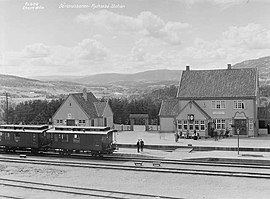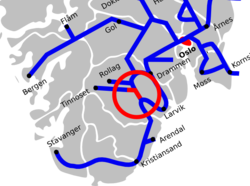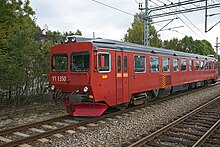Bratsbergbanen
| Eidanger – Nordagutu until 2008: Eikonrød – Tinnoset |
||||||||||||||||||||||||||||||||||||||||||||||||||||||||||||||||||||||||||||||||||||||||||||||||||||||||||||||||||||||||||||||||||||||||||||||||||||||||||||||||||||||||||||||||||||||||||||||||||||||||||||||||||||||||||||||||||||||||||||||||||||||||||||||||||||||||||||||||||||||||||||||||||||||||||||||||||||||||||||||||
|---|---|---|---|---|---|---|---|---|---|---|---|---|---|---|---|---|---|---|---|---|---|---|---|---|---|---|---|---|---|---|---|---|---|---|---|---|---|---|---|---|---|---|---|---|---|---|---|---|---|---|---|---|---|---|---|---|---|---|---|---|---|---|---|---|---|---|---|---|---|---|---|---|---|---|---|---|---|---|---|---|---|---|---|---|---|---|---|---|---|---|---|---|---|---|---|---|---|---|---|---|---|---|---|---|---|---|---|---|---|---|---|---|---|---|---|---|---|---|---|---|---|---|---|---|---|---|---|---|---|---|---|---|---|---|---|---|---|---|---|---|---|---|---|---|---|---|---|---|---|---|---|---|---|---|---|---|---|---|---|---|---|---|---|---|---|---|---|---|---|---|---|---|---|---|---|---|---|---|---|---|---|---|---|---|---|---|---|---|---|---|---|---|---|---|---|---|---|---|---|---|---|---|---|---|---|---|---|---|---|---|---|---|---|---|---|---|---|---|---|---|---|---|---|---|---|---|---|---|---|---|---|---|---|---|---|---|---|---|---|---|---|---|---|---|---|---|---|---|---|---|---|---|---|---|---|---|---|---|---|---|---|---|---|---|---|---|---|---|---|---|---|---|---|---|---|---|---|---|---|---|---|---|---|---|---|---|---|---|---|---|---|---|---|---|---|---|---|---|---|---|---|---|---|---|---|---|---|---|---|---|---|---|---|---|---|---|---|---|---|---|
|
Nordagutu Railway Station
| ||||||||||||||||||||||||||||||||||||||||||||||||||||||||||||||||||||||||||||||||||||||||||||||||||||||||||||||||||||||||||||||||||||||||||||||||||||||||||||||||||||||||||||||||||||||||||||||||||||||||||||||||||||||||||||||||||||||||||||||||||||||||||||||||||||||||||||||||||||||||||||||||||||||||||||||||||||||||||||||||
| Route length: | 47 km | |||||||||||||||||||||||||||||||||||||||||||||||||||||||||||||||||||||||||||||||||||||||||||||||||||||||||||||||||||||||||||||||||||||||||||||||||||||||||||||||||||||||||||||||||||||||||||||||||||||||||||||||||||||||||||||||||||||||||||||||||||||||||||||||||||||||||||||||||||||||||||||||||||||||||||||||||||||||||||||||
| Gauge : | 1435 mm ( standard gauge ) | |||||||||||||||||||||||||||||||||||||||||||||||||||||||||||||||||||||||||||||||||||||||||||||||||||||||||||||||||||||||||||||||||||||||||||||||||||||||||||||||||||||||||||||||||||||||||||||||||||||||||||||||||||||||||||||||||||||||||||||||||||||||||||||||||||||||||||||||||||||||||||||||||||||||||||||||||||||||||||||||
| Power system : | from Tinnegrend on to Tinnosbanen, not to Notodden collective terminal : 15 kV, 16 2 ⁄ 3 Hz ~ |
|||||||||||||||||||||||||||||||||||||||||||||||||||||||||||||||||||||||||||||||||||||||||||||||||||||||||||||||||||||||||||||||||||||||||||||||||||||||||||||||||||||||||||||||||||||||||||||||||||||||||||||||||||||||||||||||||||||||||||||||||||||||||||||||||||||||||||||||||||||||||||||||||||||||||||||||||||||||||||||||
| Maximum slope : | Nordagutu – Skien ø 18 ‰ km 164.756 at Valeseter max. 36 ‰ |
|||||||||||||||||||||||||||||||||||||||||||||||||||||||||||||||||||||||||||||||||||||||||||||||||||||||||||||||||||||||||||||||||||||||||||||||||||||||||||||||||||||||||||||||||||||||||||||||||||||||||||||||||||||||||||||||||||||||||||||||||||||||||||||||||||||||||||||||||||||||||||||||||||||||||||||||||||||||||||||||
| Top speed: | 105 km / h shuttle train 110 km / h |
|||||||||||||||||||||||||||||||||||||||||||||||||||||||||||||||||||||||||||||||||||||||||||||||||||||||||||||||||||||||||||||||||||||||||||||||||||||||||||||||||||||||||||||||||||||||||||||||||||||||||||||||||||||||||||||||||||||||||||||||||||||||||||||||||||||||||||||||||||||||||||||||||||||||||||||||||||||||||||||||
| Operating points and routes | ||||||||||||||||||||||||||||||||||||||||||||||||||||||||||||||||||||||||||||||||||||||||||||||||||||||||||||||||||||||||||||||||||||||||||||||||||||||||||||||||||||||||||||||||||||||||||||||||||||||||||||||||||||||||||||||||||||||||||||||||||||||||||||||||||||||||||||||||||||||||||||||||||||||||||||||||||||||||||||||||
|
||||||||||||||||||||||||||||||||||||||||||||||||||||||||||||||||||||||||||||||||||||||||||||||||||||||||||||||||||||||||||||||||||||||||||||||||||||||||||||||||||||||||||||||||||||||||||||||||||||||||||||||||||||||||||||||||||||||||||||||||||||||||||||||||||||||||||||||||||||||||||||||||||||||||||||||||||||||||||||||||
Bratsberg Line since 2008 the name of the railway in Norway between Eidanger and Nordagutu in Fylke Telemark og Vestfold runs. Before 2008, the term Bratsbergbanen referred to the section between Eikonrød and Tinnoset .
The route is served by Norges Statsbaner , which runs trains between Notodden and Porsgrunn. On the Bratsbergbane, Norway's highest railway bridge is used over the Hjuksa, which runs 65 meters above the lowest point below. There are 45 bridges, 20 tunnels and 48 level crossings along the route.
Meaning of the term Bratsbergbanen and historical development
It is often unclear how the Bratsbergbane runs. This did not improve when Jernbaneverket changed some route names in 2008. The reason for this is that two railway lines run over a shared section that runs between Hjuksebø and Nordagatu and is used by the Sørlandsbane and the Bratsbergbane.
In the north, the regular gauge Rjukanbane was completed in 1909 as a rail link from Norsk Hydro between Rjukan and Notodden. The company was named Norsk Transportaktieselskab . The Rjukanbane consisted of the sections Rjukan – Mæl and Tinnoset – Notodden, with a railway ferry on Tinnsjøen as a connection between the two sections of the route. This line was electrified in 1911.
On July 9, 1908, the Storting decided to build the Sørlandsbane from Kongsberg to Neslandsvatn and a line between Hjuksebø and Notodden, in order to connect the Rjukanbane to the national railway network. Three years later, on July 25, 1913, it was decided to build a railway from Nordagutu to Eikonrød in Skien, in order to create a coherent and direct railway connection between Rjukanbane and the Skien-Porsgrunn region.
Norsk Hydro wanted this connection to go all the way to the coast. The line between Notodden and Eikonrød was opened in 1917, three years before the Sørlandsbane between Kongsberg and Hjuksebø. The entire route Notodden – Hjuksebø – Nordagutu – Skien N – Eidanger was called Bratsbergbanen . According to the agreement of July 25, 1913, Tinnosbanen from the Rjukanbane was taken over by the state as the state railway company Tinnoset-Porsgrunnbanen ( TPB ) and operated by Norges Statsbaner from 1920. The Rjukanbane was thus shortened to the Rjukan – Mæl section, while the Bratsbergbanen was added to the Notodden – Tinnoset section. From the opening of the Notodden – Eikonrød line on December 17, 1917, the Bratsbergbane led from Tinnoset to Eikonrød.
In the south, the Grevskapsbane was built as a narrow-gauge railway to Skien in 1882. Their train station in Skien was in the center and was named Skien G (Skien gamle) after a new train station was built on Nylende with the construction of the Bratsbergbane. The new station was named Skien N (Nylende).
The regular-gauge Bratsbergbane met the narrow-gauge Vestfoldbane in Eikonrød, 1.9 km south of Skien G. Norsk Hydro needed a means of transport to Borgestad . Therefore, a three-rail track was laid between Eikonrød and Borgestad, which was put into operation on December 4, 1916. In practice, this meant that the Bratsbergbane went to Borgestad from the start. Norsk Hydro was able to carry out its bulk cargo transports on the route as early as 1916, while the construction of a fully-fledged standard gauge railway was not yet completed.
Regular gauge operation began on December 17, 1917 and the opening ceremony took place on February 9, 1920. From July 1, 1920, the Tinnosbane was officially part of the Bratsbergbane. Before opening to general traffic in 1917, freight trains for Norsk Hydro ran between Rjukan and the port in Menstad only when needed .
On February 11, 1920 the connection Hjuksebø – Kongsberg was opened, the line Kongsberg – Hjuksebø – Nordagutu is now part of the Sørlandsbane. The line between Notodden and Borgestad was electrified on May 7, 1936.
From July 1, 1923, the route between Porsgrunn and Skien was added to the Bratsbergbane, so that the name Tinnoset – Porsgrunnbanen was the correct description of the Bratsbergbane from this date . From June 16, 1921, the entire route from Skien G to Eidanger was operated in regular lane and the third rail was removed. In practice , the Bratsbergbane leads as far as Eidanger, which then became a lane changing station with the Vestfoldbane.
The Sørlandsbane between Nordagutu and Gvarv was opened in 1922 and finally reached Kristiansand in 1938. In operational terms, the Bratsbergbane between Hjuksebø and Nordagutu was used more and more by trains from the Sørlandsbane. This section was often perceived as part of the Sørlandsbane and not the Bratsbergbane. In the 1990s, Norsk Hydro's transports between Rjukan, Notodden and Borgestad came to an end. This reduced the traffic on the Bratsbergbane very much, apart from the section between Hjuksebø and Nordagatu.
In 2008 Jernbaneverket changed several route names. On Jernbaneverket's own website, it is unclear what is called Bratsbergbanen. If JBV's Network Statement 2012 is taken as a basis, the route Skien N – Nordagutu can be referred to as Bratsbergbane. Nordagutu – Hjuksebø is part of the Sørlandsbane and the route Hjuksebø – Notodden – Tinnoset is known as the Tinnosbanen .
Current operation
In 2000, TIMEtoget Bratsbergbanen AS, which was founded on January 1st, tried to carry out the Porsgrunn – Notodden tourist traffic with three 20-year-old diesel multiple units of the type Y1 bought second-hand in Sweden . The Notodden station collective terminal should be completed by January 1, 2002. With a travel time of 55 minutes over the entire route, a train should run every hour. This should increase the number of passengers from 90,000 to 150,000 annually. Freight traffic on the route should not be affected by passenger traffic. Fifteen employees were provided for operational management.
The company was dissolved in November of the same year after an internal power struggle over NSB's majority stake, and NSB took over the railcars and operations.
In 2004 a new branch line was opened from the Notodden nye stasjon station to Notodden kollektivterminal, the transfer point to the regional buses. However, this section of the route was not electrified. This meant that no electric railcars could be used, but diesel railcars continued to handle the traffic.
Since then, the stations in Porsgrunn, Skien, Nisterud, Nordagutu and Notodden have been operated by Fylke Telemark in partnership with NSB. The stations Hoppestad, Valebø, Dalsvatnet, Holtsås, Hjuksebø, Trykkerud, Tveitan, Tinnegrend and Notodden Bahnhof were closed. Borgestad followed in 2006 while Trykkerud reopened in 2008.
In the spring of 2010, there was another threat to the suspension of travel. The government decided to follow the development until the end of 2014.
In July 2011, after a flood at Notodden train station, several landslides occurred, which led to the line between Nordagutu and Notodden being closed for a longer period of time.
In August 2015, the last two Swedish Y1 cars were scrapped. From August 10, 2015, electric railcars of the BM69 and BM70 series were alternately used for a short time . Two two-car units of the BM69 series have been in operation since 2016. Since there is no contact line to the previous terminus at Notodden collective terminal, the trains will run back to Notodden nye stasjon until the planned electrification of this section.
Web links
Individual evidence
- ↑ Banestrekninger - Bratsberg Line. Railway stations 2014. jernbaneverket.no, accessed September 25, 2014 (Norwegian).
- ↑ In Norwegian , the ending "-en" for nouns is a definite article . Therefore, the correct designation in German texts is either “Bratsbergbanen” or “die Bratsbergbane”.
- ↑ a b c Thor Bjerke, Finn Holom: Banedata 2004 . Ed .: Norsk Jernbaneklubb, Norsk Jernbaneklubb. Oslo / Hamar 2004, ISBN 82-90286-28-7 , pp. 210 , urn : nbn: no-nb_digibok_2011040708010 .
- ↑ Thor Bjerke, Finn Holom: Banedata 2004 . Ed .: Norsk Jernbaneklubb, Norsk Jernbaneklubb. Oslo / Hamar 2004, ISBN 82-90286-28-7 , pp. 210 and 232 , urn : nbn: no-nb_digibok_2011040708010 .
- ↑ Thor Bjerke, Finn Holom: Banedata 2004 . Ed .: Norsk Jernbaneklubb, Norsk Jernbaneklubb. Oslo / Hamar 2004, ISBN 82-90286-28-7 , pp. 294 , urn : nbn: no-nb_digibok_2011040708010 .
- ↑ Thor Bjerke, Finn Holom: Banedata 2004 . Ed .: Norsk Jernbaneklubb, Norsk Jernbaneklubb. Oslo / Hamar 2004, ISBN 82-90286-28-7 , pp. 220 , urn : nbn: no-nb_digibok_2011040708010 .
- ↑ Facta om Rjukanbanen. Maana Forlag ANS, accessed September 25, 2014 (Norwegian).
- ↑ a b c d e MARI NYMOEN: Donates Norges eneste privateide togselskap. Telen, September 6, 1999, accessed September 25, 2014 (Norwegian).
- ^ The Swedish class Y 1 multiple unit in Norway. Retrieved September 25, 2014 .
- ↑ LARS ERIK RINGEN: Kamp om makten i TIMEtoget? Telen, March 11, 1999, accessed September 25, 2014 (Norwegian).
- ^ Svein Sando: Norske lok og motorvogner January 1, 2008 . Ed .: Norsk Jernbaneklubb. Trondheim 2008, p. 120 .
- ↑ Framleis persontog på Bratsberg Line. banenor.no, April 30, 2010, accessed August 28, 2019 (Norwegian).
- ↑ Bratsberg Line stengt ved Notodden. banenor.no, July 24, 2011, accessed August 28, 2019 (Norwegian).
- ↑ Elektrisk togmateriell settes inn på almost Bratsberg Line. nsb.no, August 5, 2015, archived from the original on September 22, 2015 ; Retrieved August 28, 2019 (Norwegian).


